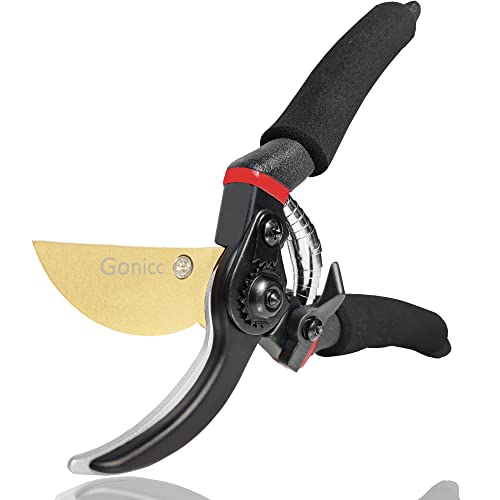7 shrub pruning mistakes to avoid to keep your plants healthy and encourage beautiful flowering displays year after year
Gardening experts reveal simple tips to prevent you from falling foul of these common pruning errors
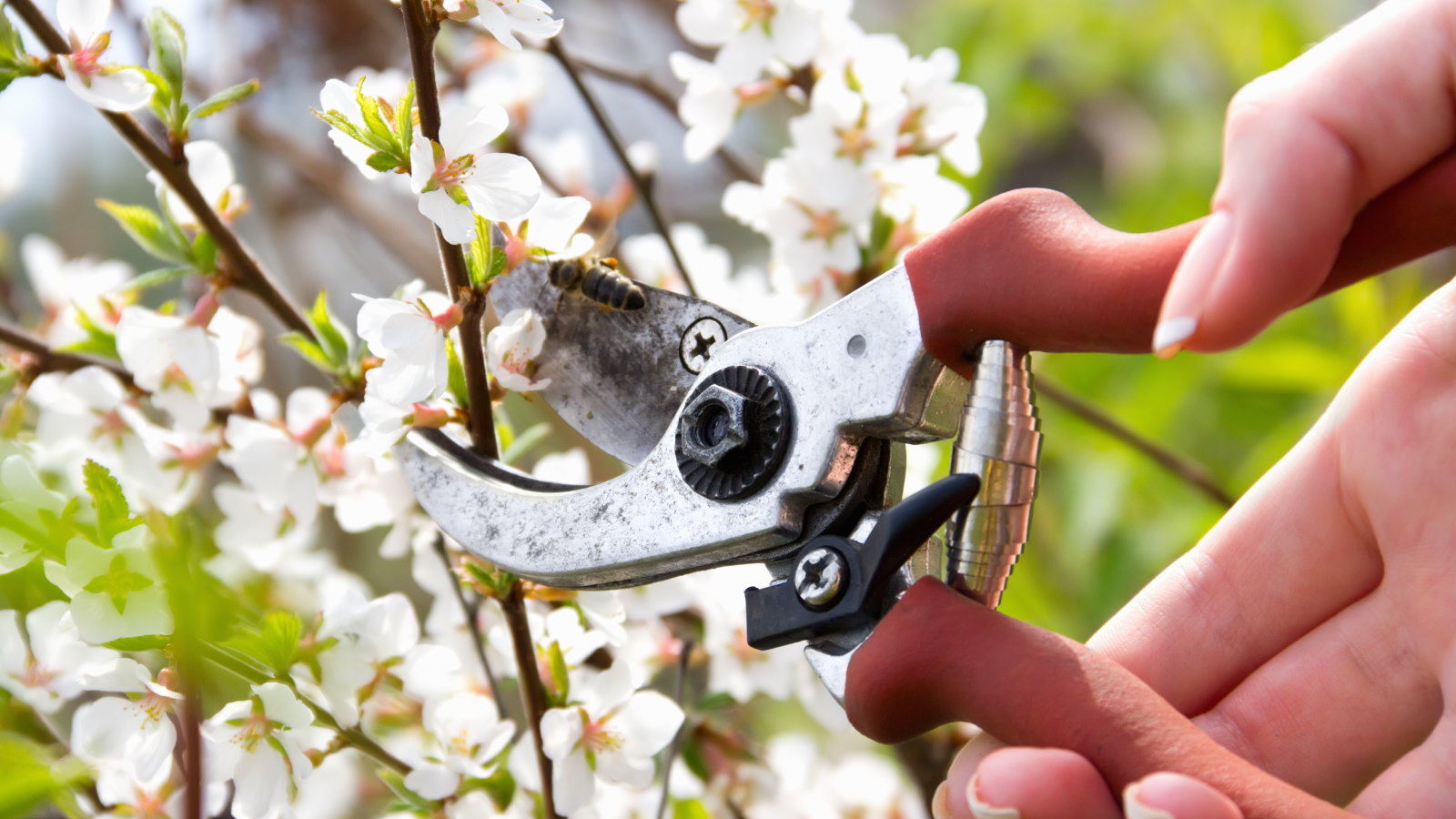

The goal when pruning shrubs is to keep them healthy, shapely, and performing at their best so you can enjoy a beautiful display year after year. When done properly, pruning can be simple and enjoyable and you are rewarded with bountiful blooms.
Unfortunately, when pruning is not done right you can miss out on a year of flowering, a shrub can look ugly or not regenerate properly, and be at risk of pests and diseases. There is always the potential to make many shrub pruning mistakes if trimming is not researched, planned, or done carefully.
We are here to help you avoid making such mistakes when pruning shrubs. I spent many years pruning different shrubs as a professional gardener in large historic public gardens in the UK. I learned lessons during that time about how to cut back shrubs, and how not to prune, and have also spoken to other expert gardeners for this guide to help you avoid seven common shrub pruning mistakes.
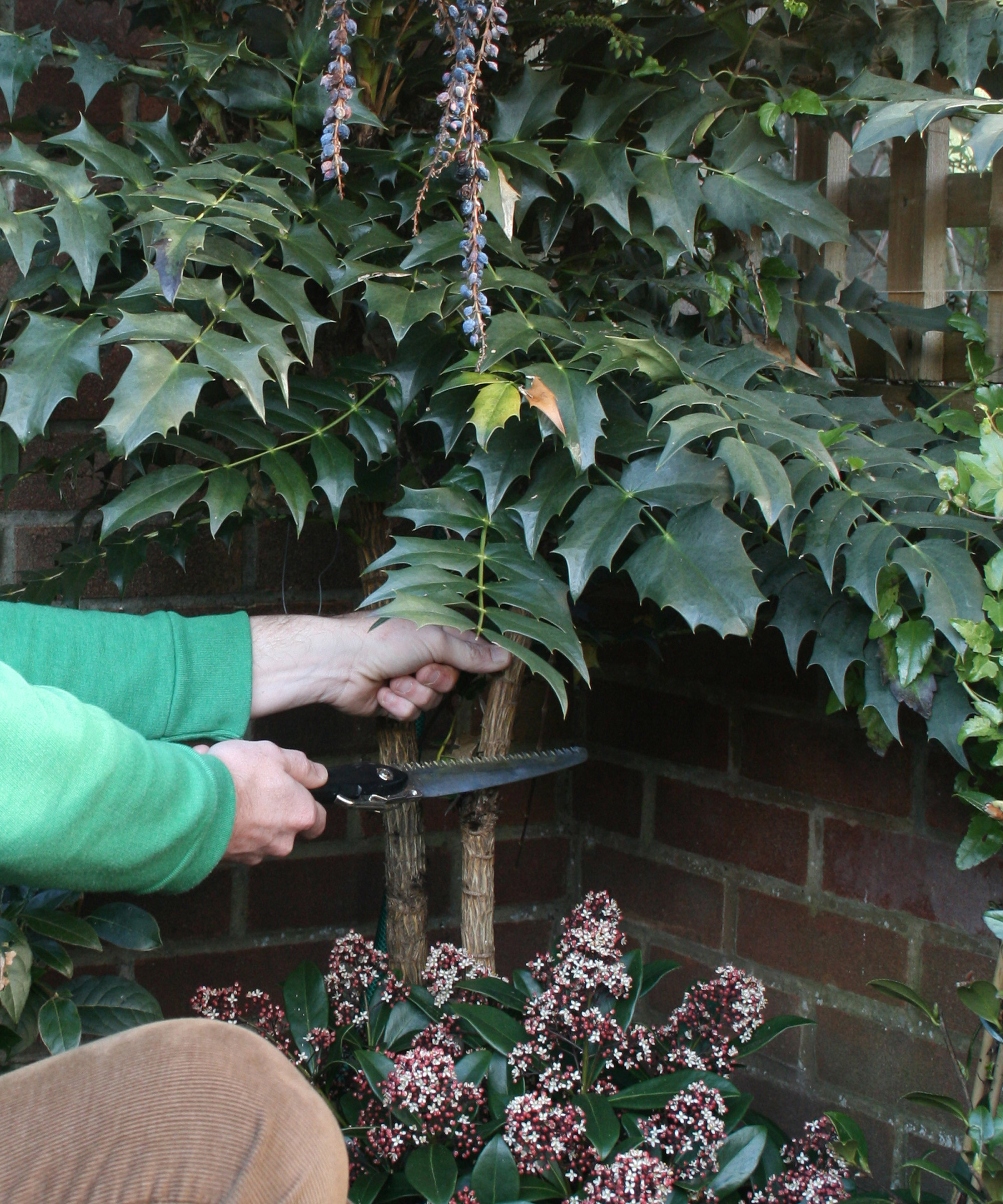
7 shrub pruning mistakes to avoid
Planning is always important. Whether in terms of when or how you will prune, going into shrub pruning without a plan is always risky. These seven points will help you prepare for pruning and help you feel more confident heading out with the cutting tools to deal with backyard shrubs.
Removing buds
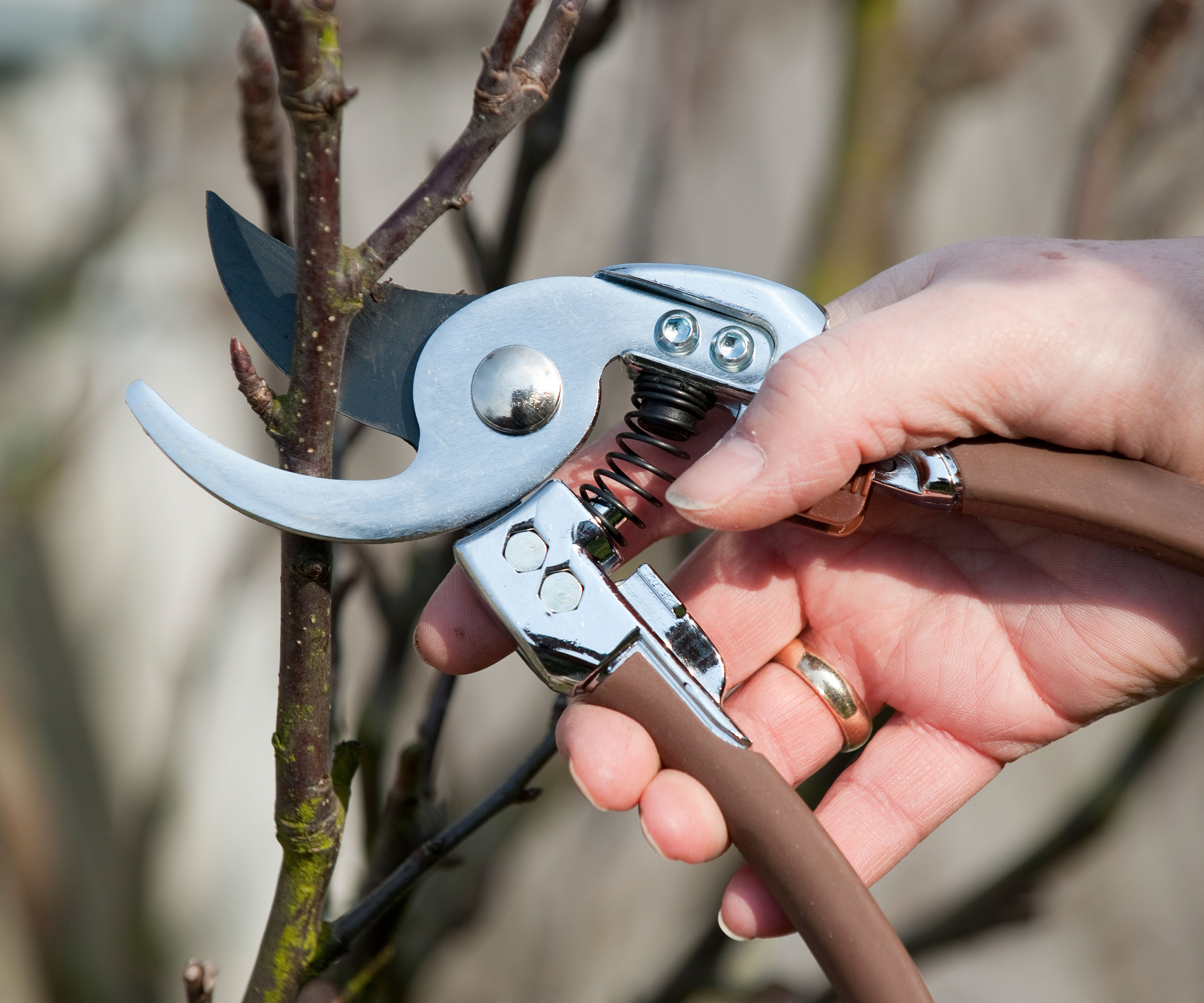
Avoid removing flowering buds and robbing you of future displays of blooms by understanding when to prune shrubs. Trim at the right time and you can get a happy and performing shrub that looks fantastic covered in blooms, get it wrong and it may be devoid of flowers.
Matt Johnson, senior gardener at Borde Hill, says: ‘One of the most common mistakes people make is pruning at the wrong times of the year and are confused as to why their shrub hasn’t flowered.
‘People often prune a shrub simply because it looks untidy however this is just its natural cycle. The biggest and easiest tip is to prune after the shrub has flowered.’
This means pruning spring flowering shrubs in summer after blooming and summer flowering shrubs when dormant in late winter or early spring. On top of no blooms, getting the timing wrong is a pruning mistake that can increase the risk of diseases.

Matt's horticulture journey started at the age of 19 at a renowned plant nursery. He spent time as Head Gardener at an estate in Warwickshire, UK, before moving to Borde Hill as a senior gardener. He's now hands-on with a significant collection of exotic trees and shrubs from around the world.
Being overzealous
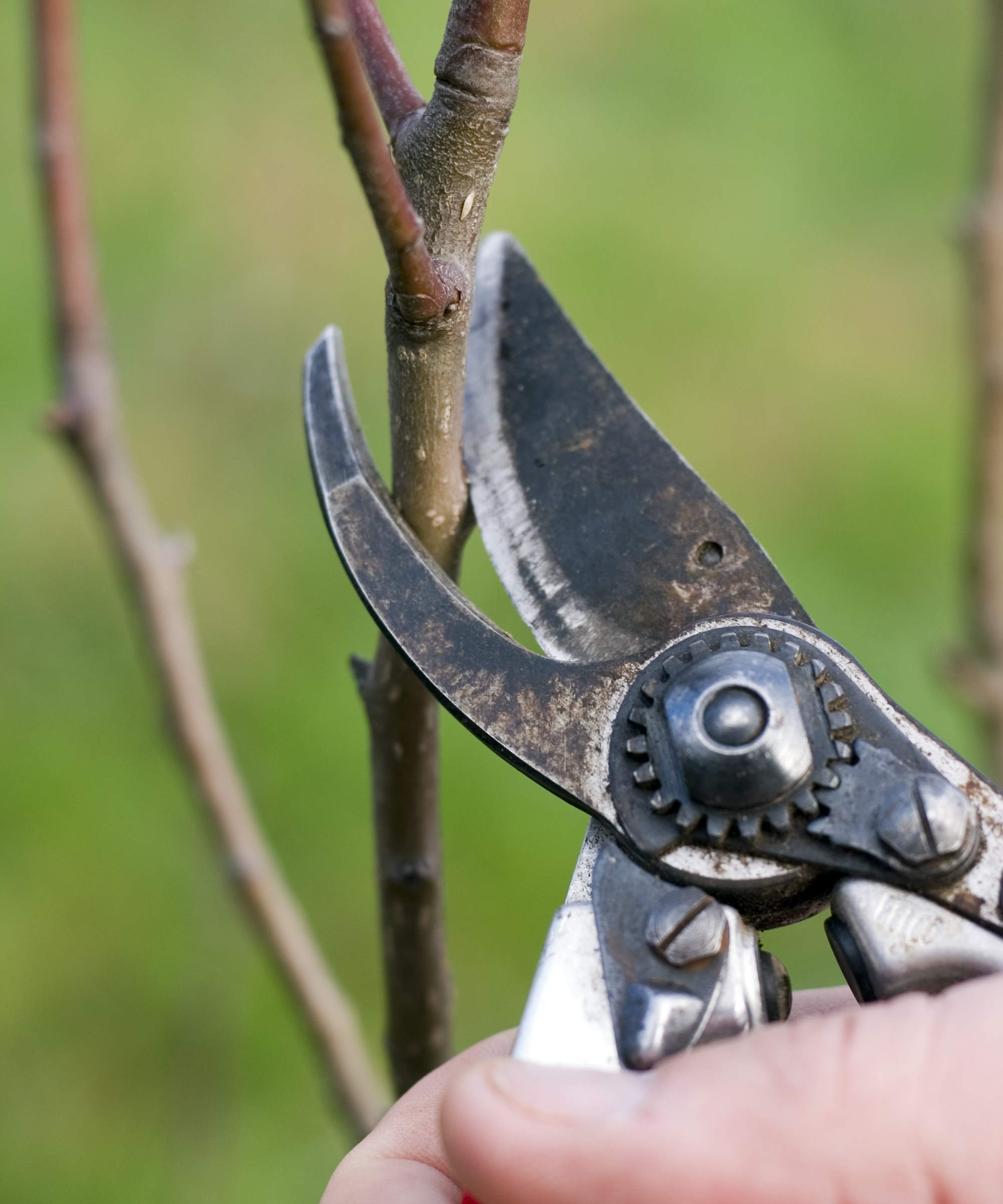
The temptation may be to get all the pruning done in one go in an attempt to rejuvenate an older or unkempt shrub. However, removing too much material is a pruning mistake that can threaten the shrub’s long-term health. Excessive pruning can shock a shrub and it may respond with lots of foliage and no flowers for the next year, if it comes back at all.
‘I’d always recommend pruning in stages, reducing the size of your shrub over a couple of years,’ says Paul Hicks, product and marketing manager at STIHL GB. ‘If you’re overzealous, you may end up with a shrub that doesn’t flower for at least a year. A simple rule to remember when it comes to pruning; the harder you prune your plants, the longer they’ll take to flower.’
Rather than cutting too much, remember the one-third pruning rule and renovate older, larger shrubs over three years.
As well as removing too much material, Angela Slater, a gardening expert from Hayes Garden World, warns of cutting too far back into the shrub. ‘Avoid pruning too deeply into the old wood of shrubs, as this can hinder regrowth,’ she adds. ‘Some shrubs, like lavender, may not regenerate at all if cut into old wood.’

Angela Slater holds a degree in Conservation and Land Management and has worked for Hayes Garden World, in various guises, for 33 years. Angela is a regular contributor to many national, lifestyle and garden trade publications.
Topping shrubs
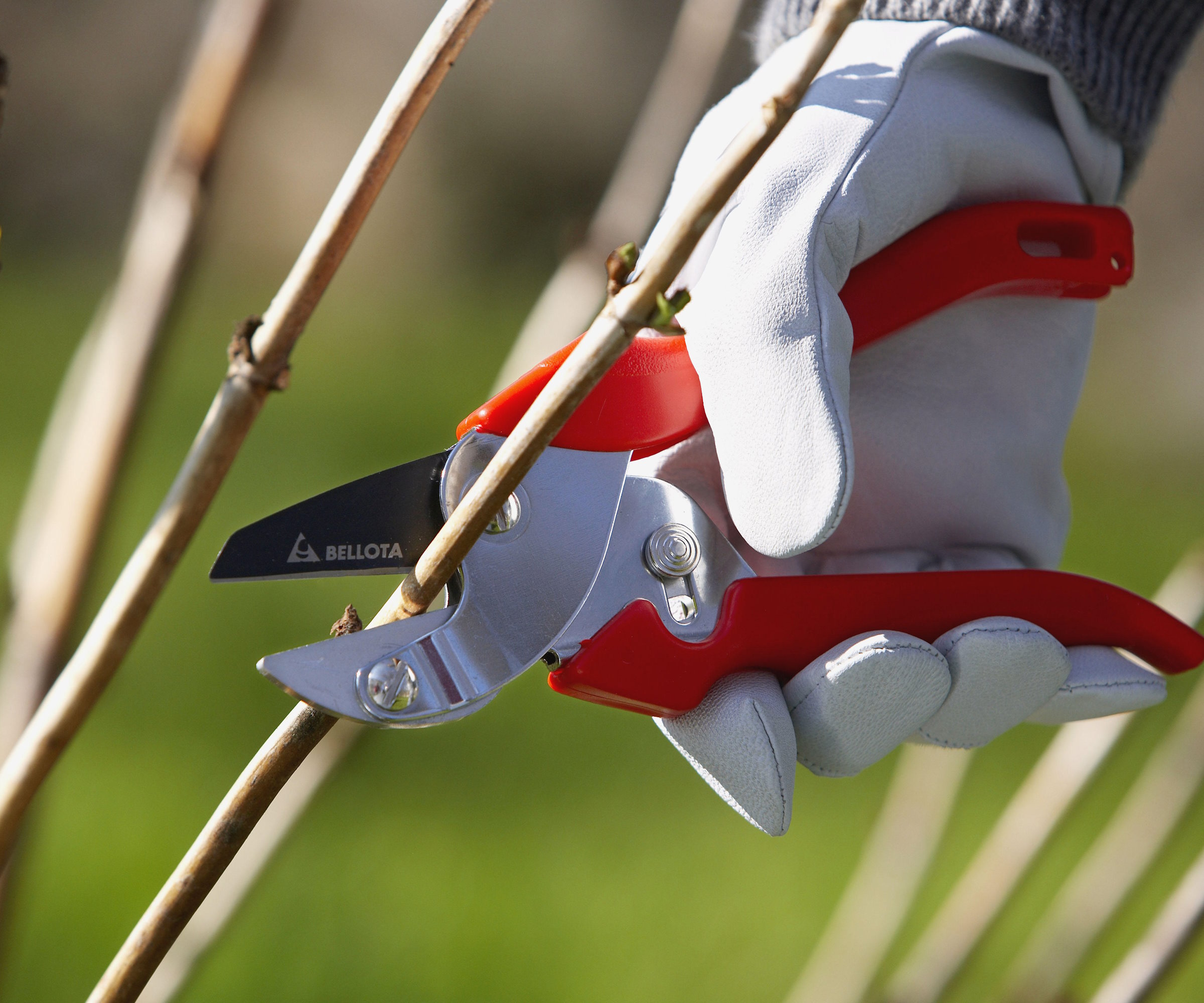
Topping a shrub to reduce the height is a bad move. Merely cutting all large stems at one level when attempting to control a shrub’s height just prompts the shrub to put on a flush of new stems from just below where you topped it. These stems are more than likely going to be weak and can end up as an eye sore, as well as being vulnerable to damage.
So what is a better approach? Selectively pruning branches back to a healthy lateral or bud, or removing older tall stems completely to reduce the height and width, will mean a controlled shrub that produces healthy growth.
The wrong tools
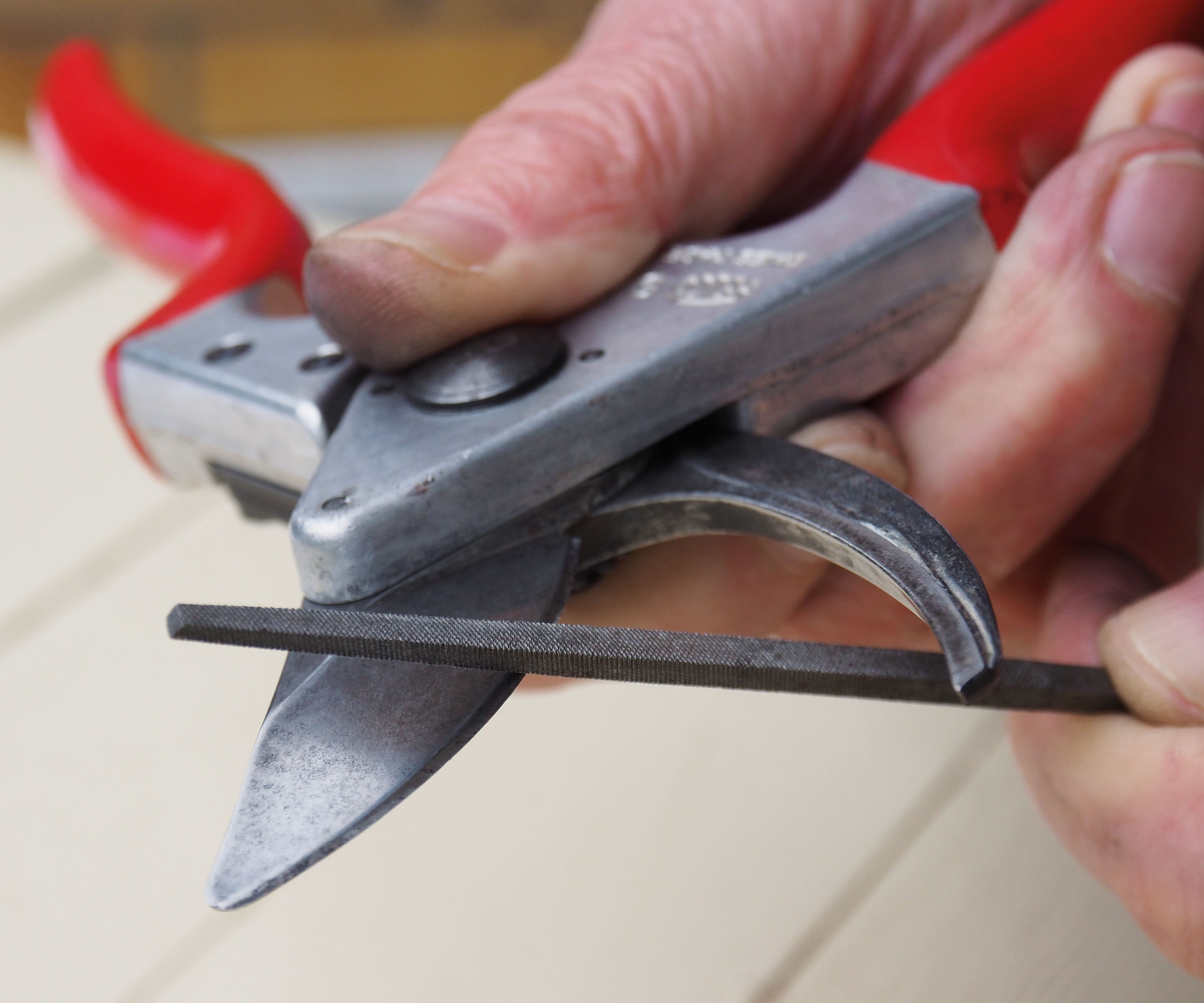
Why risk the health of your shrubs just by not using the right tools? It seems very basic advice to use sharp tools, however, too often gardeners head out to prune with blunt or dirty blades that can do more harm than good.
The wrong tools, along with badly-maintained tools will damage shrubs. As Steve Swanborough, gardening expert at Henchman, warns: ‘Dull or dirty blades can tear branches and increase the risk of spreading diseases.’
Clean cuts made by sharp blades are easier to heal, jagged or frayed cuts from blunt cutting tools are much harder to repair. The pruning wounds remain open to the elements for longer as the shrub struggles to heal, leaving more susceptible to pests and diseases troubling the shrub.
Also, not cleaning garden tools regularly is another mistake. It is recommended to clean any pruning shears or loppers between plants to avoid spreading diseases from shrub to shrub around the backyard.
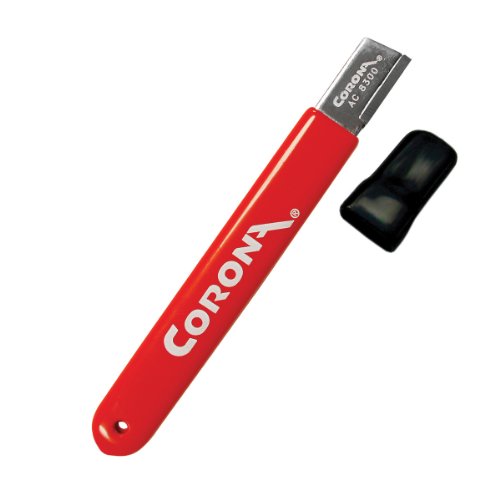
A small and convenient pocket-sized blade sharpener to use on all garden tools that have straight blades, including pruning shears, hedging shears, and loppers
Not regularly pruning
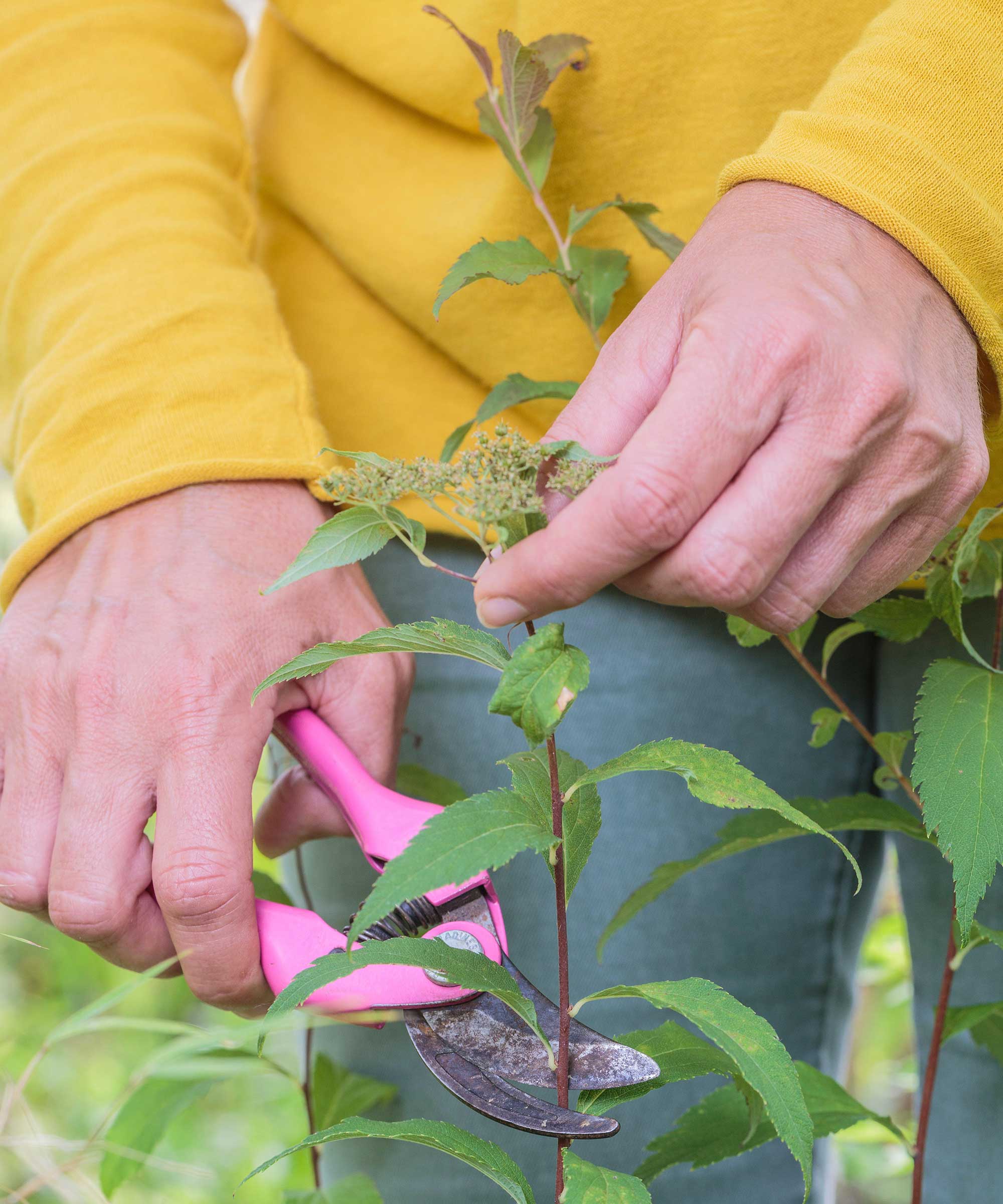
Many gardeners may be unsure about pruning or lack confidence, which can lead them to not pruning regularly enough or not pruning shrubs at all.
The healthiest and best-performing shrubs will be regularly trimmed. It is a mistake to wait and not prune a shrub until it looks worse for wear and in desperate need of a trim. Pruning then becomes a much bigger job and it can be more difficult to get it back into a natural, attractive shape.
Renovating or rejuvenating shrubs that haven’t been touched for many years can take several seasons because, as mentioned above, it would be another mistake to massively overhaul a shrub in one go.
After a few years without pruning, shrubs can get congested, be full of unproductive wood and dead, damaged, or diseased branches. It will not put on a good display and often only blooms on the top of the shrub rather than all over.
Try to remember to put pruning summer flowering shrubs on your spring gardening checklist and spring flowering shrubs on a summer to-do list.
Causing unnecessary stress
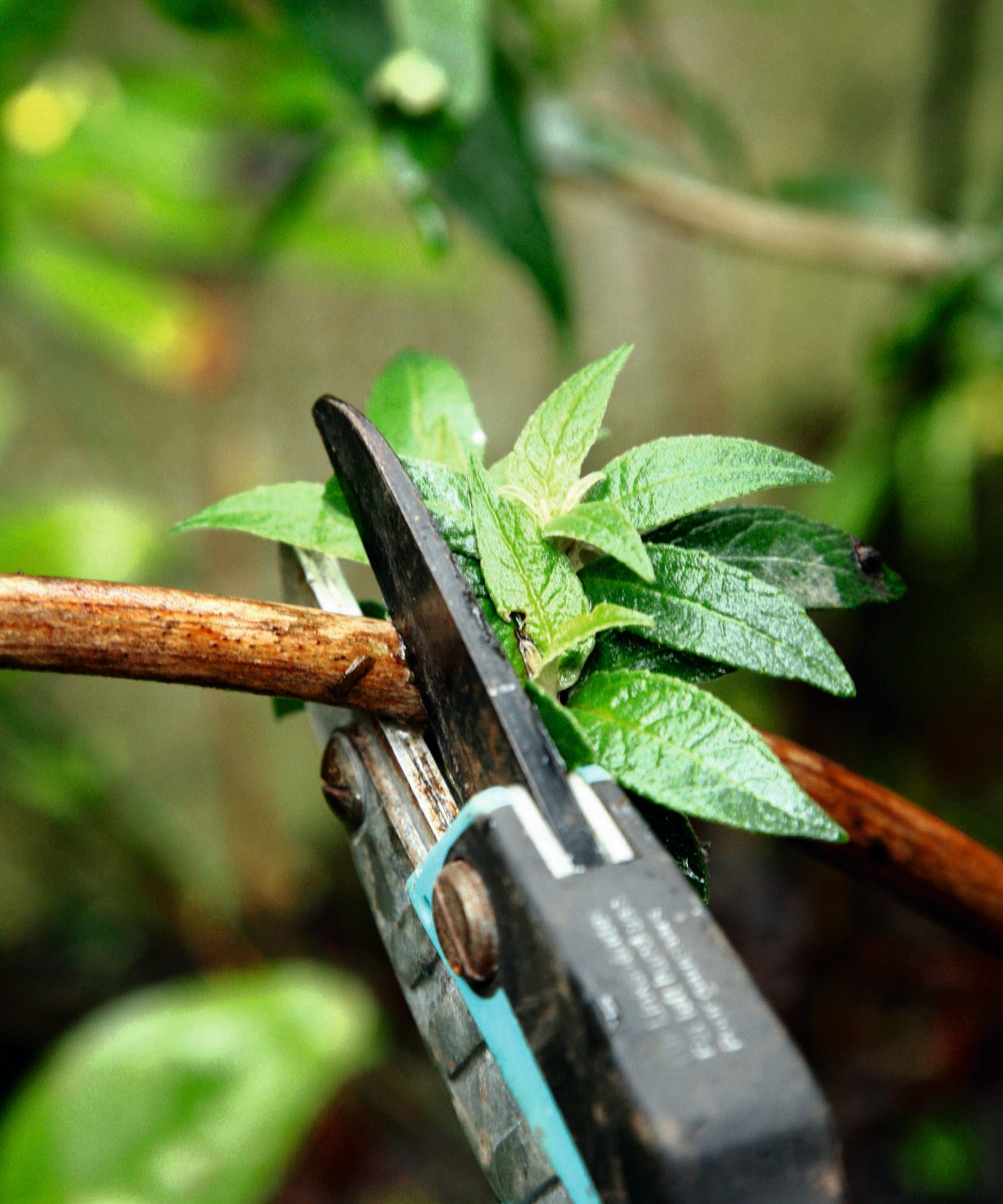
Shrubs can be stressed and left vulnerable to disease by improper pruning. A stressed shrub will not respond to trimming in the preferred way and can leave them at increased risk.
For example, it may be tempting to prune shrubs in fall to tidy the backyard but this will encourage the plant to respond by putting out new growth. This flush of new stems will be damaged by the winter frosts and can be the trigger for disease or decay to set in. Pruning during periods of extreme cold, or extreme heat in summer, can also cause unnecessary stress to the shrub.
Always monitor the shrub’s health and try to preserve that. Start by removing the 3 Ds of dead, damaged, and diseased growth and make any cuts at a downward angle so water does not pool on the wound and risk fungal diseases. Always clean up your pruning, as any debris left around the shrub can harbour pests and diseases. Any non-diseased stems and leaves can be added to the pile to make compost.
Rushing with no plan
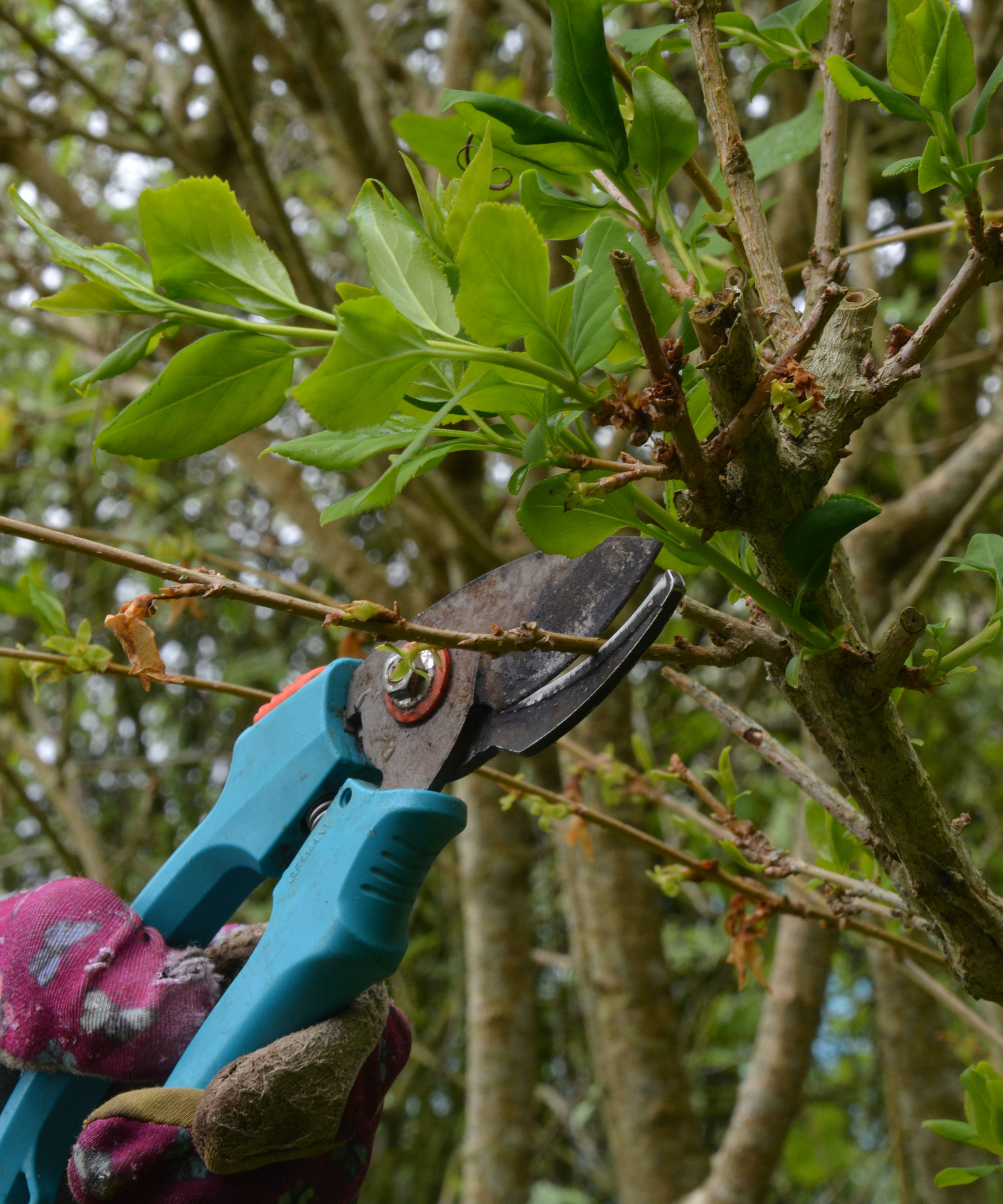
Take your time when pruning, rushing in to prune without a real plan will never yield the best results. Given the potential issues that incorrect pruning can cause, measured planning and thinking about cuts shouldn’t be underestimated.
Stand back and take a good look at the shrub to visualise the shape you are aiming for and make sure each cut is done for a reason.
Start, as outlined above, by removing dead, diseased, and damaged branches, then focus on crossing or weak stems. This can often open up the center and allow more air and light into the shrub. Then selectively prune stems to shape the shrub and make downward-facing pruning cuts just above an outward-facing bud. Take time and think about each cut, making sure to not remove too much.
Shop pruning shears for trimming shrubs
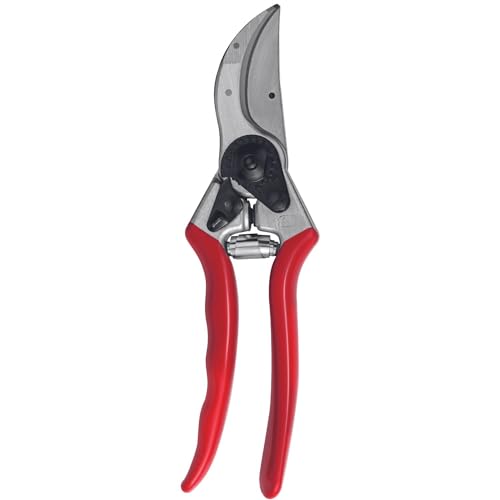
A pair of lightweight and sturdy pruning shears, with all parts replaceable.
Any flowering shrubs and evergreen shrubs will benefit from pruning, so do not be daunted to head out and trim. By following our recommendations, even fast-growing shrubs can be kept controlled and blooming beautifully.
Do some research as there is a lot of advice out there for guidance. For example, you can refer to our guides to pruning hydrangeas and pruning butterfly bushes, along with many other helpful shrub pruning guides on the Homes & Gardens website.
Sign up to the Homes & Gardens newsletter
Design expertise in your inbox – from inspiring decorating ideas and beautiful celebrity homes to practical gardening advice and shopping round-ups.

Drew’s passion for gardening started with growing vegetables and salad in raised beds in a small urban terrace garden. He has worked as a professional gardener in historic gardens and specialises in growing vegetables, fruit, herbs, and cut flowers as a kitchen gardener. That passion for growing extends to being an allotmenteer, garden blogger, and producing how-to gardening guides for websites. Drew was shortlisted for the New Talent of the Year award at the 2023 Garden Media Guild Awards.
-
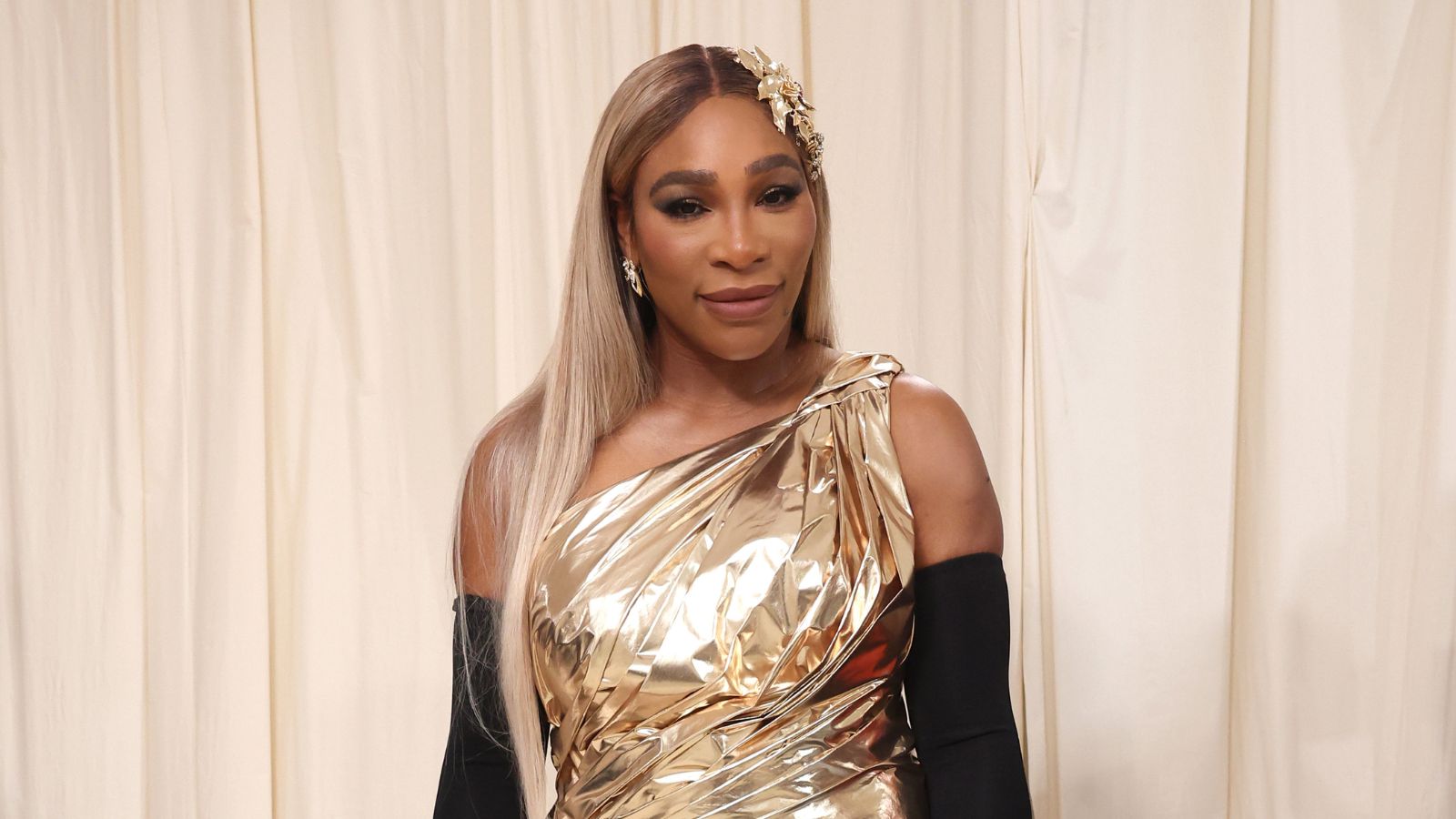 Serena Williams' luxury gold wall transforms her bathroom into a 'visually stunning space' – it will rewrite your color conventions
Serena Williams' luxury gold wall transforms her bathroom into a 'visually stunning space' – it will rewrite your color conventionsThe tennis pro's metallic statement wall introduces 'glamour and elegance' to the most unexpected room of the home – and you can recreate her style
By Megan Slack Published
-
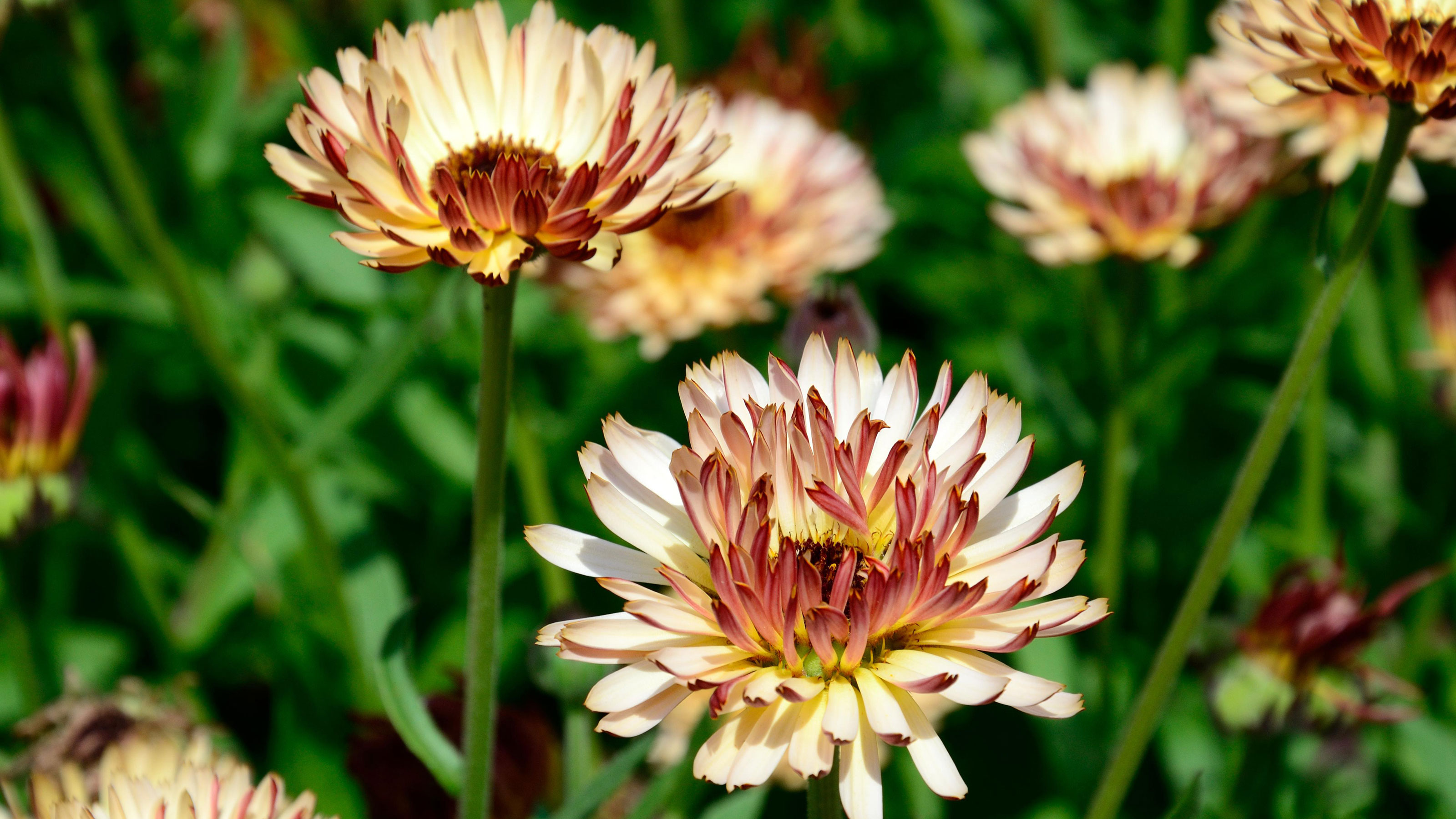 Calendula varieties – 16 pot marigolds that will provide more than just a burst of sunshine all summer long
Calendula varieties – 16 pot marigolds that will provide more than just a burst of sunshine all summer longDiscover the best calendula varieties and why these hard-working plants need to be in every garden
By Ruth Hayes Published
-
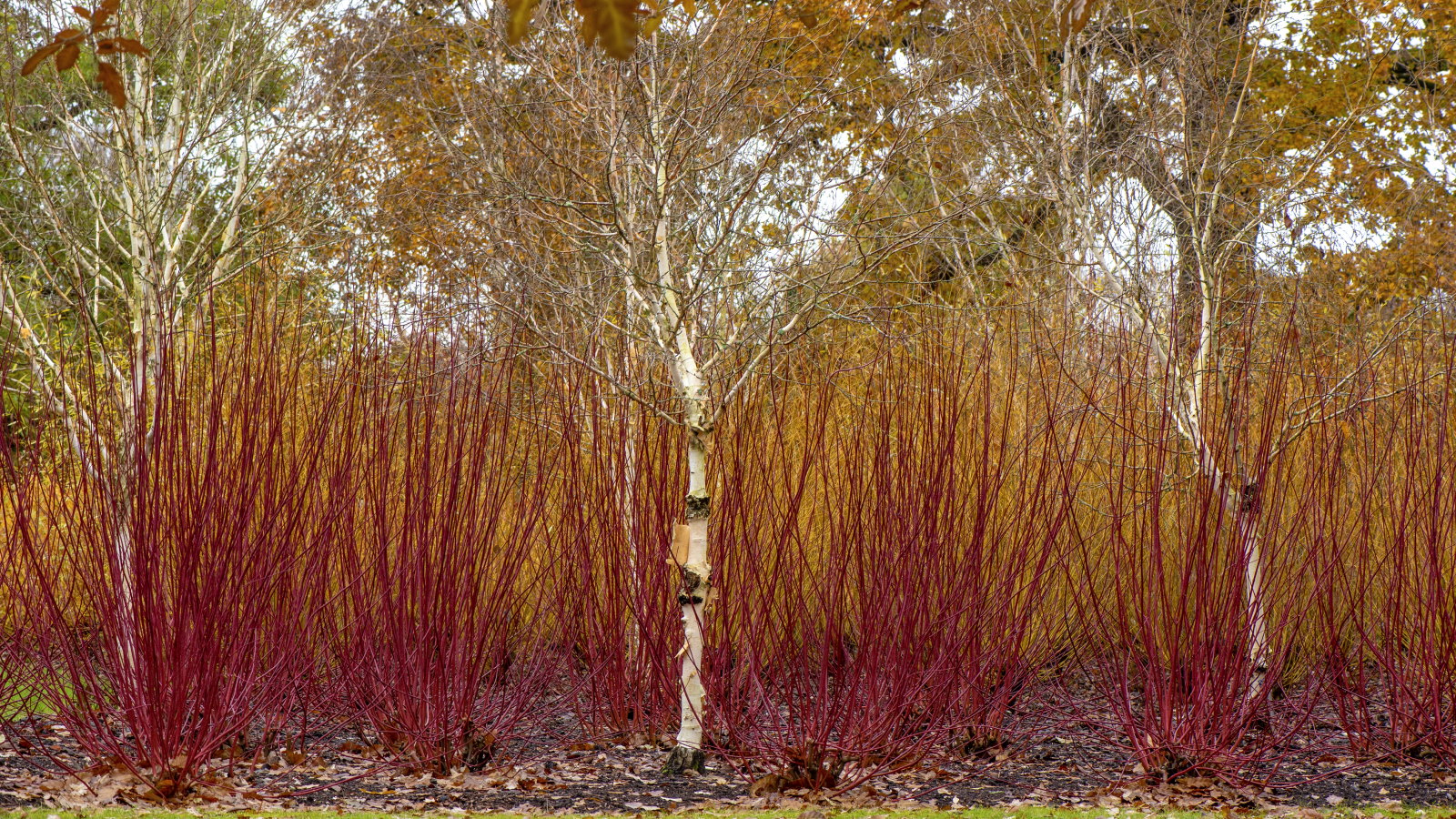 How to coppice trees and shrubs – and the 5 species that will benefit from this historical and super simple pruning technique
How to coppice trees and shrubs – and the 5 species that will benefit from this historical and super simple pruning techniqueCoppicing has aesthetic and practical benefits in a garden
By Drew Swainston Published
-
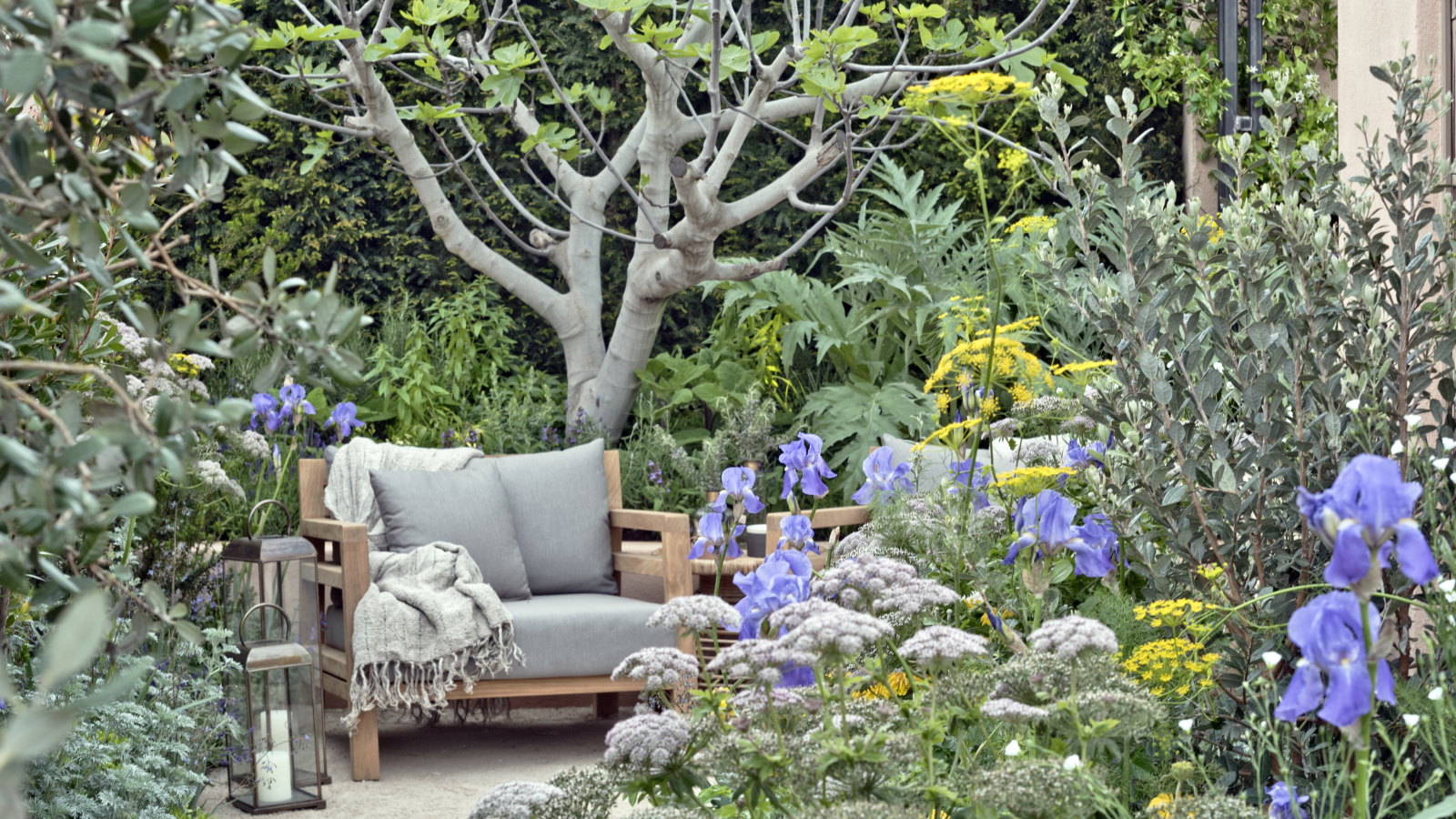 Horticulturists urge you to prune these 7 plants in April – for healthy growth and better-than-ever flowering displays
Horticulturists urge you to prune these 7 plants in April – for healthy growth and better-than-ever flowering displaysDiscover a key selection of plants to cut back this month, with expert pruning advice
By Drew Swainston Published
-
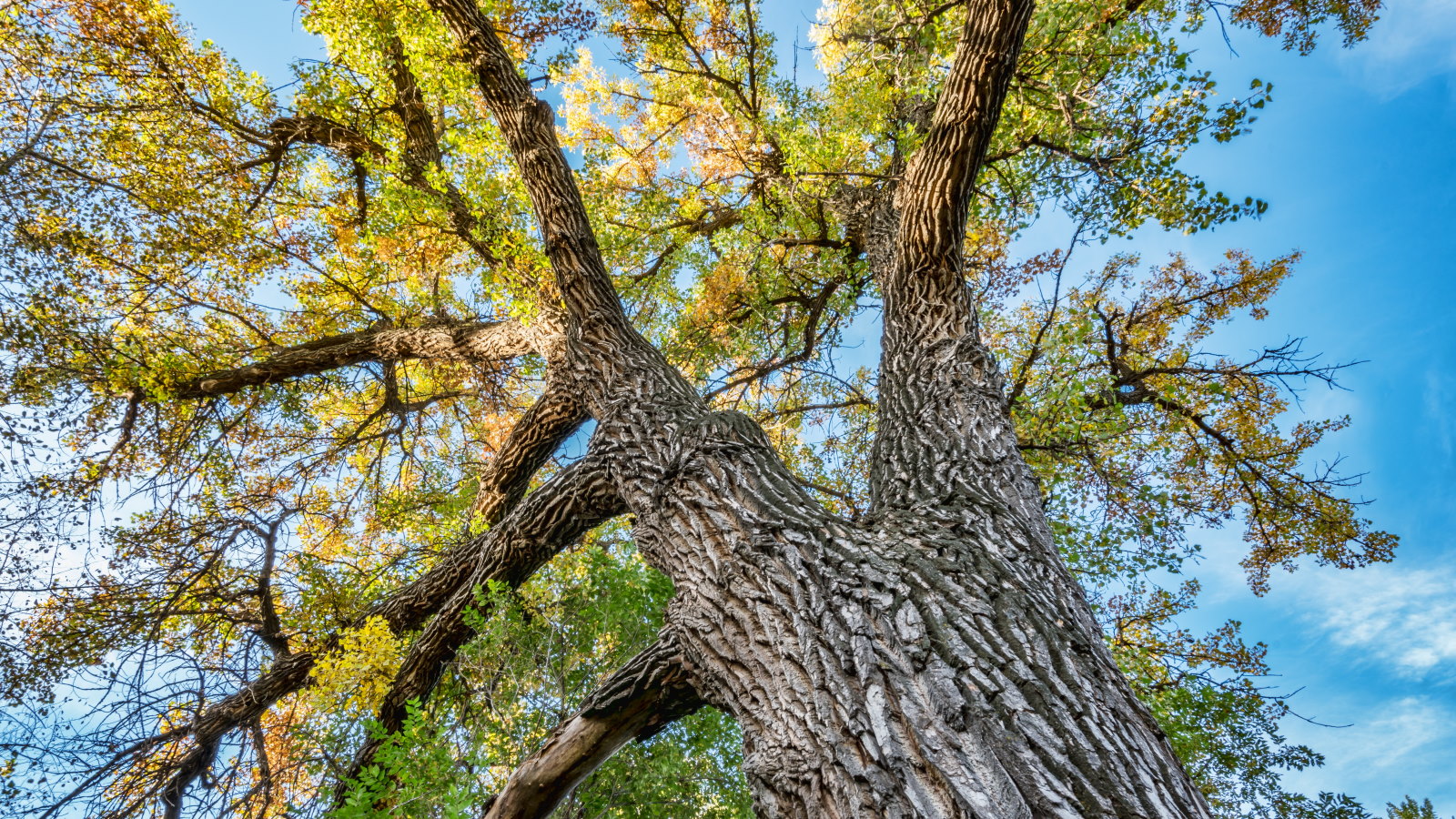 Safety is the number one reason to prune a cottonwood tree – an arborist reveals the best trimming routine to follow
Safety is the number one reason to prune a cottonwood tree – an arborist reveals the best trimming routine to followWhen and how to prune young and established cottonwoods
By Drew Swainston Published
-
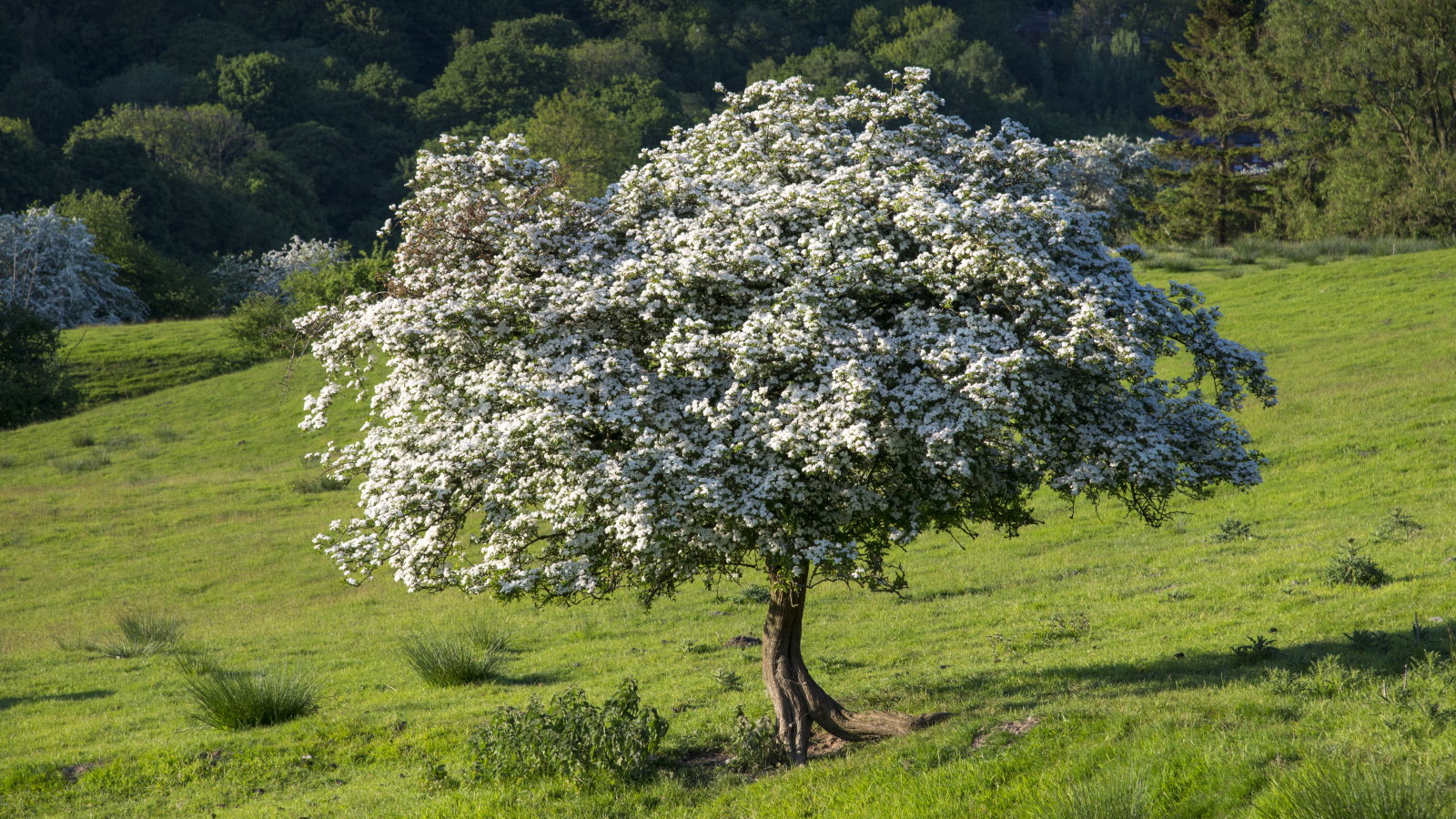 Now is the time to prune hawthorn trees to keep them healthy and attractive – 5 expert-recommended steps to follow for proper trimming
Now is the time to prune hawthorn trees to keep them healthy and attractive – 5 expert-recommended steps to follow for proper trimmingAvoid unnecessarily stressing your trees by pruning at the right time and not getting carried away
By Drew Swainston Published
-
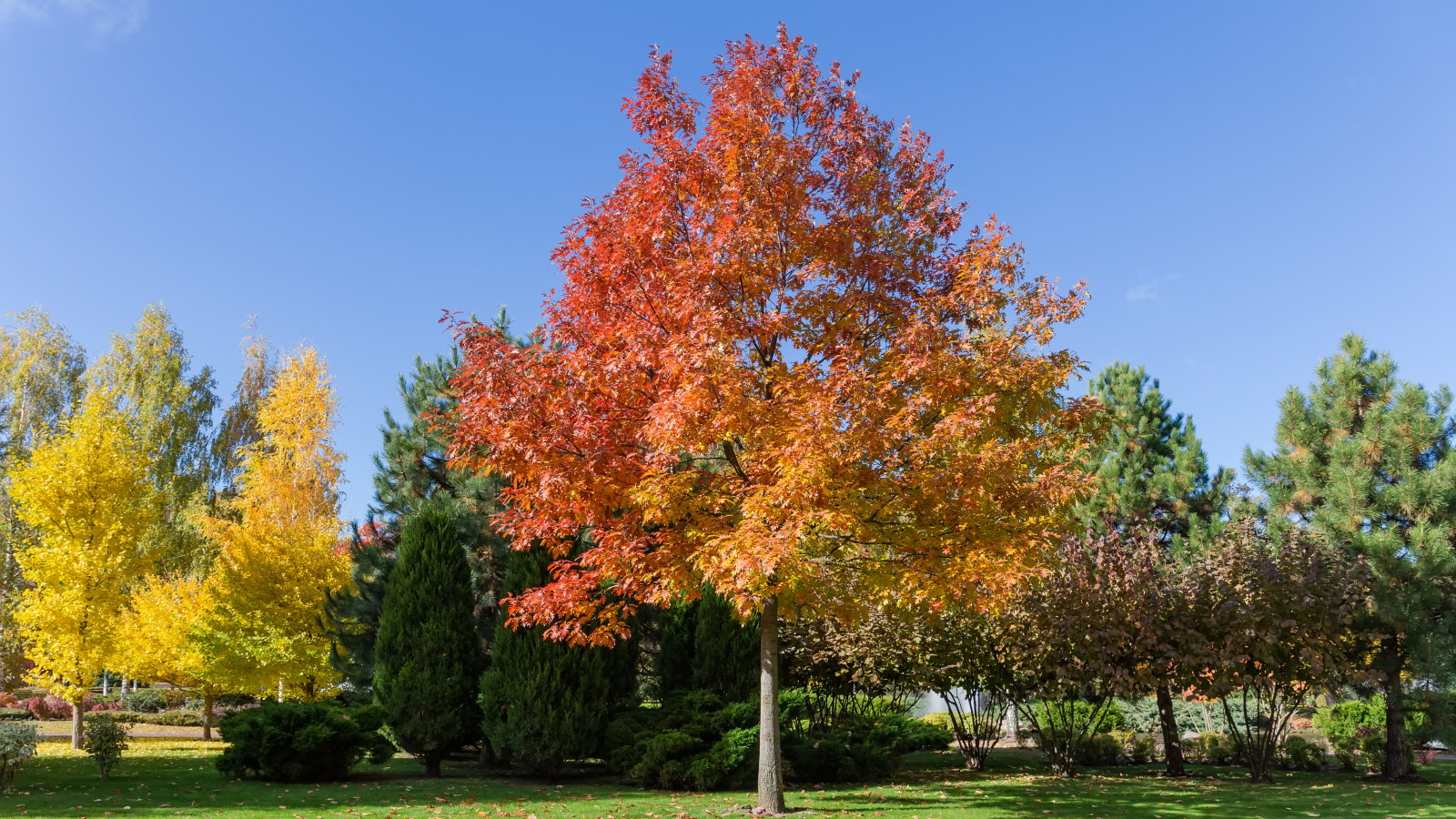 This is your last chance to prune oak trees to avoid a potentially fatal disease that can kill trees within months, arborists reveal
This is your last chance to prune oak trees to avoid a potentially fatal disease that can kill trees within months, arborists revealStay safe and discover what you can prune at different times of the year
By Drew Swainston Published
-
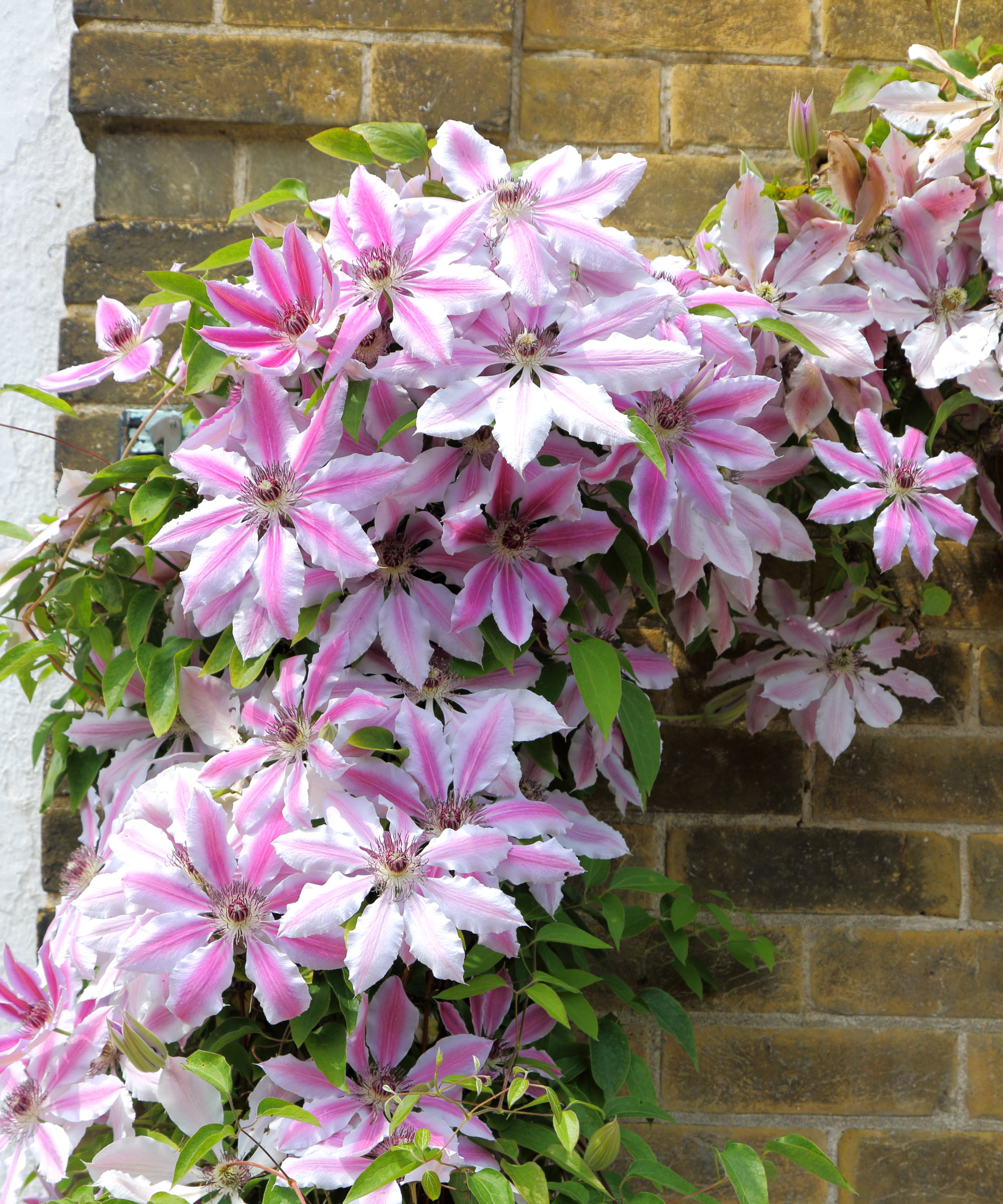 Expert horticulturists reveal 5 clematis pruning mistakes to avoid if you want spectacular floral displays
Expert horticulturists reveal 5 clematis pruning mistakes to avoid if you want spectacular floral displaysWhy you need to prune at the right time and not remove too much or too little
By Drew Swainston Published
-
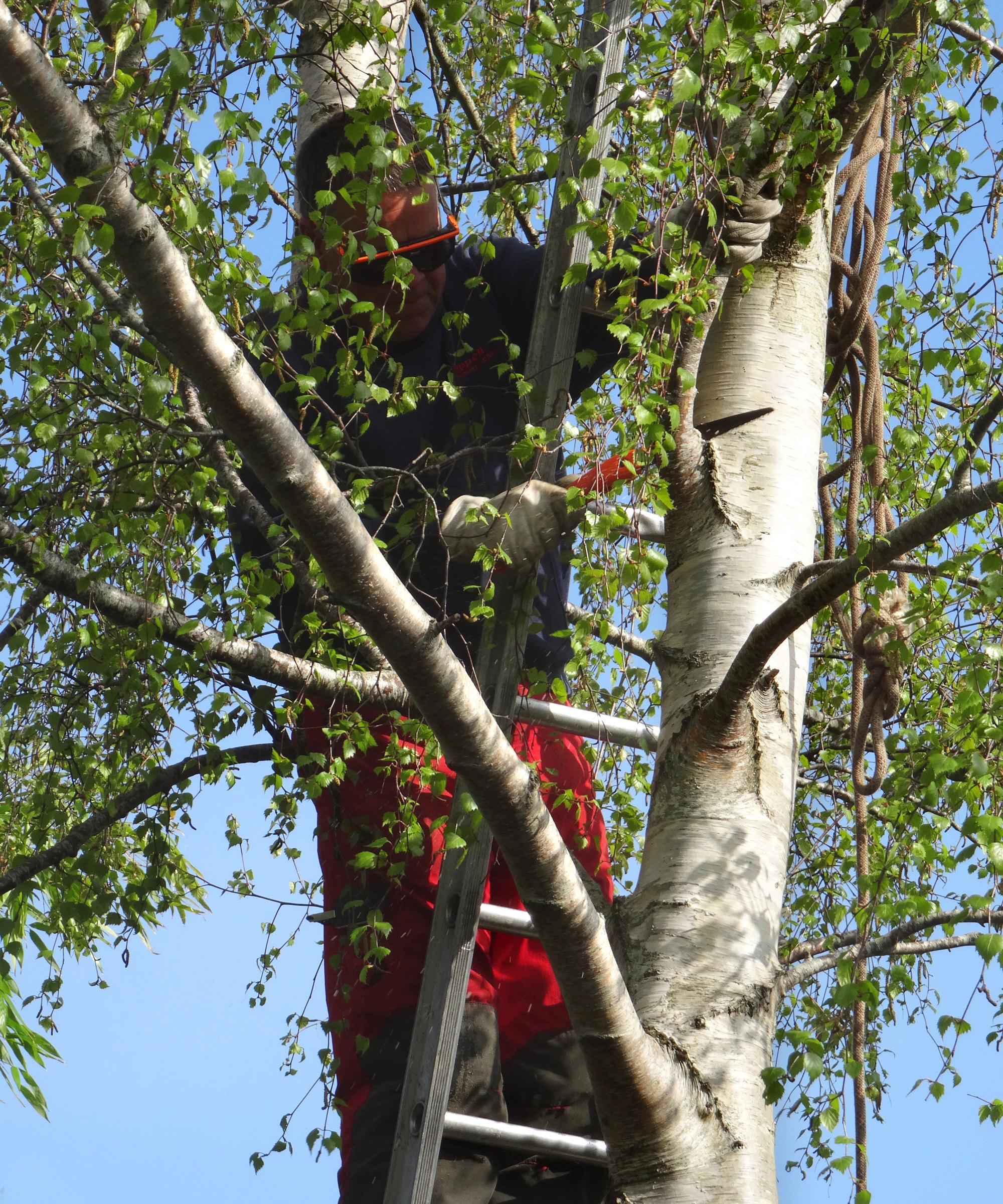 How to prune birch trees – arborists reveal 5 golden rules to follow and 3 things you should never do
How to prune birch trees – arborists reveal 5 golden rules to follow and 3 things you should never doAggressive pruning can be fatal to birch trees – here is how to avoid it
By Drew Swainston Published
-
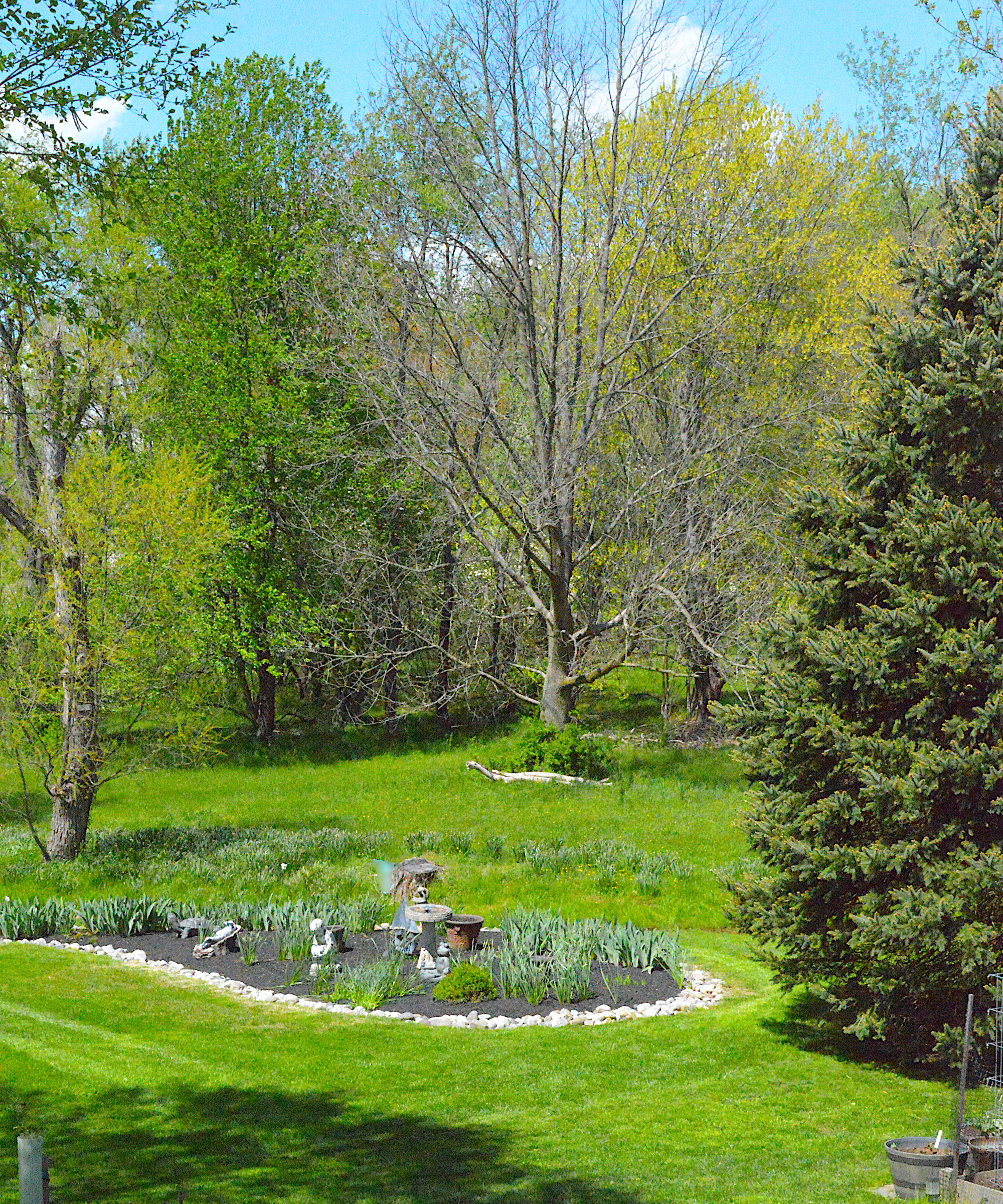 There's still time to prune deciduous trees this month – expert trimming advice for 9 of the most popular backyard trees
There's still time to prune deciduous trees this month – expert trimming advice for 9 of the most popular backyard treesThese trees will benefit from pruning in February with our handy guide
By Drew Swainston Published

